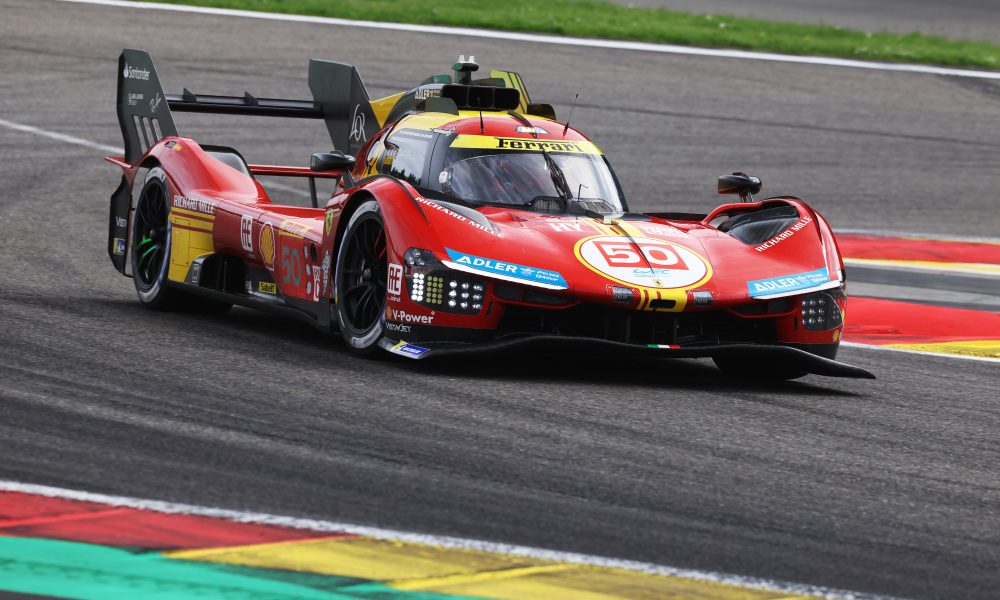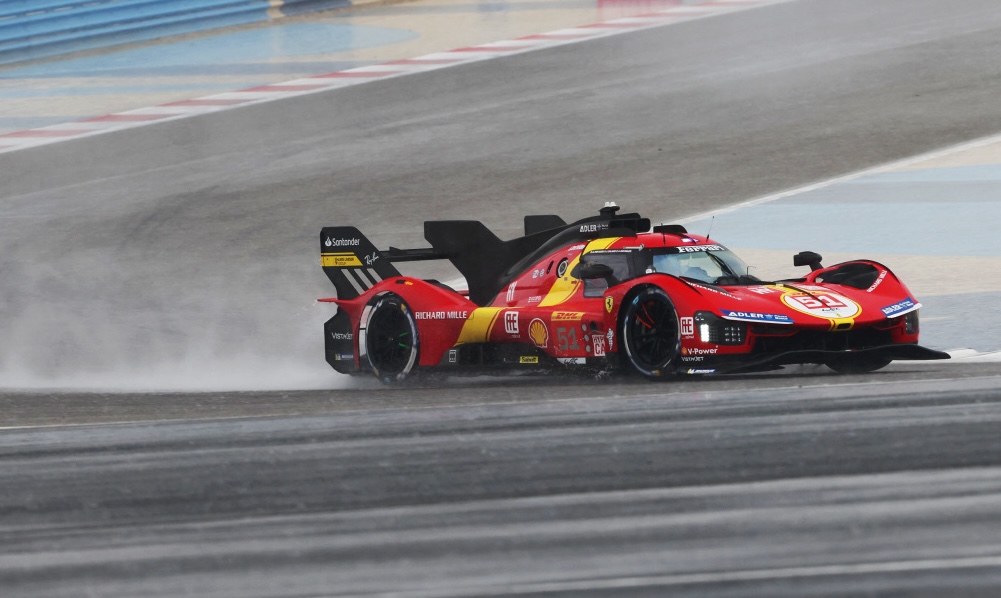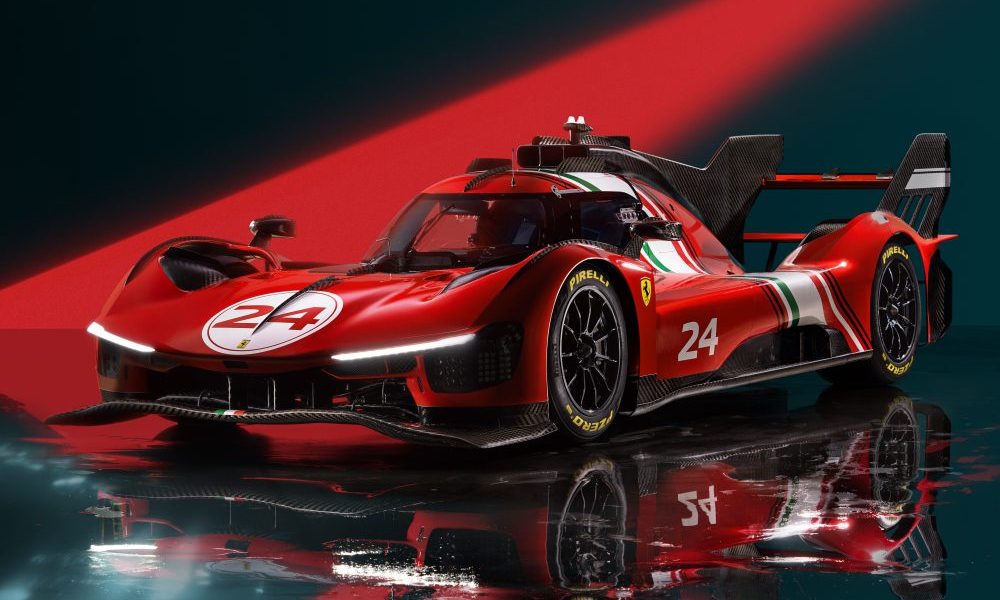The Ferrari 499P is set to benefit from its first set of performance (‘Joker’) and reliability-focused upgrades according to Ferdinando Cannizzo, Ferrari’s head of endurance race cars. The Italian marque is close to signing off the changes to the car, which it hopes will be introduced after Le Mans, but before the end of the 2024 FIA WEC season.
Speaking with RACER in Maranello last week, Cannizzo wouldn’t be drawn into specifics on the changes. He felt it wouldn’t be wise to reveal the exact nature of the upgrades at this stage, to prevent “the competition from getting an advantage”.
However, when pressed by RACER for additional information, he was able to reveal that the changes to the car, which in its current form is identical (bar a change to the endurance lights for this year) to the model it debuted at Sebring last March, would not affect its looks.
“We need to explore the real potential of the car,” he explained. “There are weak points that we need to take care of and improve. We have started work on some evolutions for the car, and we will probably arrive with some form of ‘Joker’ modification before the end of the season.
“We cannot say when exactly, but we are working and the process in some areas is already progressing. We started testing some modifications that have proven to be effective on track and we are close to signing it off.
“These changes are not related to aero, for example, it’s more within the ‘dress’ of the car. We are trying to offset some areas in which we identified a lack of performance. There are a lot of things we can improve in the car, which require ‘Joker’ updates, and we are prepared to do it.
“We will see if (the first set of updates) this arrives by the end of the season. Then we have something else that will follow this in the future, but we don’t know if it will be for next year or two years time.”
The general target from Ferrari with this ‘Joker’ upgrade – the first of five permitted over the course of the car’s homologation – is not to improve the car’s speed over a single lap. Instead, the hope is that these changes will improve the 499P’s ability to sustain front-running pace over the course of multiple stints during races.

“We want to express our performance in a better way,” he said. “It’s more to strengthen the car, not in a single lap time but more in robustness. So to be close to the margin every lap. We will not improve the peak performance, but probably we will improve the car’s consistency at some specific circuits where we needed to be more conservative in operating the car.”
Cannizzo also clarified that these updates are not aimed at tire life, an area that many teams in the Hypercar class have struggled with, particularly in the absence of tire warmers.
“No,” he responded when asked if Ferrari was specifically targeting the 499P’s ability to look after its tires. “For tire life, we have improved because it’s more related to the fact that we needed to work on understanding the car and define a proper set-up at certain circuits, in specific conditions. We are able to approach tyre management during a stint and during the race.”
As for the reliability upgrades that Ferrari has been working on alongside the performance ‘Joker’, Cannizzo said these would be ready to debut at the same time.
“The whole team is never satisfied with the car’s reliability,” he said. “We do believe that the reliability of the car is still our big concern, it’s something we need to take care of every day. Small details can destroy an entire race. So we need to pay attention to the detail.
“The work is very hard, we are working a lot. The difficulty of having homologated cars is that you can change things for reliability, but you have to show you have a problem, and that’s not easy.”
Looking further ahead, welcome news for both the management team behind FIA WEC and the championship’s fanbase is that Ferrari’s commitment to Hypercar is effectively open-ended.
Cannizzo says the Italian marque is pleased with the current ruleset and expects to compete in the WEC’s top class for the foreseeable future.
Currently, the factory Hypercar program is signed off for five years, meaning Ferrari expects to continue racing in the top class through to the end of the 2027 season in the WEC.
When asked about the future of the current Hypercar ruleset, Cannizzo explained that an extension – which is now widely expected by senior personalities in the paddock – is something Ferrari would welcome.

What this looks like though, is clearly up for debate. Leaving the future regulations that will permit hydrogen-powered cars to race to one side, there appears to be a debate surrounding the future of LMH-LMDh ‘convergence’ too.
“I am happy with the technical regulations,” Cannizzo said. “The philosophy of having a performance cap on the regulations is the right way. Because inevitably you can guarantee the fact that as long as you achieve the performance you don’t need to make a lot of developments to make yourself competitive.
“We can argue at some point about BoP, but if I look at the way we are running now we are close in weight and power. The regulations are the right one and for the future, we will have to see what will happen to Hypercar.
“I am in favour of extending the regulations. What I will work on in the future with the other manufacturers and the FIA and ACO is probably to have one single platform in the long term, instead of two different ones racing together. This is one of the targets that we should achieve.
“It could be a regulation that is a combination of the two (LMH and LMDh). We have proven the cars, whichever platform, are performing well. So I think we can go with one clear decision, but this is a personal view. And that would help a lot to strengthen the championship.
“At the moment we approved the programme for five years but we are still working on what will come after. Of course, in a company, everything needs to be approved at some point, but I don’t think that Ferrari is going to stop this commitment to endurance.”
What about the 499P racing in IMSA? This is something that Ferrari is known to have evaluated before prioritising its WEC effort at this early stage of its long-term commitment to the platform.
Thus, nothing is currently planned in the short term. The size of the program and the level of resource available is a barrier to growing the commitment, and Cannizzo rightly points out that running an IMSA campaign is no simple task due to the number of races.
So what are the chances of a factory effort from the ‘Prancing Horse’ stateside? It’s hard to say. While there is no firm plan to race in the USA with the 499P as a factory this side of 2026, Cannizzo provided an interesting insight into how likely a GTP program for the car is.
Crucially, he did not rule it out.

“The only thing stopping us is resources,” he explained. “We are a small team, and it’s not easy even to manage three cars. We would like to do better in the World Endurance Championship first, and then at some point when we are ready, we will see what our commitment will be in the USA.
“It is clear this car deserves a factory team to race it because it’s so complex, that has to be taken into consideration. But apart from that it’s too early to say at the moment what will be the future plans on top of the WEC.
“The wish is there (to race in IMSA), but we need to be aware that we need to be well prepared. If we make a commitment to have a second championship to race in, you need to prepare properly because the number of races are quite a lot. This is what we need to be sure of. We push in the right way, and now we need to have the same approach and step in when we are really ready.”
Ultimately, whether Ferrari opts to compete in IMSA or not, the 499P will still be seen on track in the USA this year, and likely, for years to come.
The three full-season 499Ps will all race in the United States as part of the WEC’s Lone Star Le Mans event at COTA in September. And the 499P will also be on track as part of the Corse Clienti events that Ferrari operates around the world, including the USA.
No fewer than four 499P Modificatas (Ferrari’s track-only, unrestricted, customer Hypercars) have already run this year at Laguna Seca (pictured above) and Sonoma.




